Production Year 2018
The Struggles and the Dreams of Foreign Care Workers in Japan
DC281868![]()
さくらの国に来て、、、 [KTV]
![]()
![]()
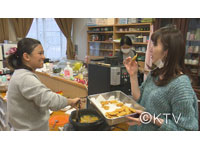
|Length : 55 |Year : 2018 |
It is said that in Japan, with an aging society, there will be a shortage of 340,000 care workers by 2025. For care centers, it is essential to welcome help from abroad.
In our program we follow two Indonesians who have come to Japan under an EPA program signed between Japan and Indonesia. They have been working at a welfare center, Hachikikai, since December 2017, at the same time studying to become certified care workers.
Under the EPA program, if they pass the certification exam within four years, they can stay and work in Japan. At Hachikikai, the staff fully supports them and helps them study even during work hours. The reason is that they want the two to continue working at their center. The staff at Hachikikai are kind and treat them as family, however they still have their own difficulties and worries.
Our program shows a very real picture of the struggles, hopes and dreams of these and other Indonesian people working hard in a land far from home.
Medical Transplantation Joins Japan to Asia ~The Challenge of the Doctor named”God’s Hands”~
DC281869![]()
「メッセージ」 岡山発アジアへ~肺移植・大藤医師の挑戦~ [RSK]
![]()
![]()
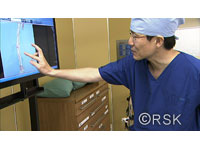
|Length : 48 |Year : 2018 |
A lung transplant is the most difficult in organ transplants. Takahiro Oto, a 50 year-old doctor in Okayama University Hospital, has succeeded lung transplanting surgeries in 100 percent. Since organ donation from people declared brain dead is quite few in Japan, patients who want organ transplant will pass away before the surgery. Dr. Oto has saved many patients who used to have no choice but giving up the surgery, with his rich experience and by using advanced medical technology. For example, he successfully completed a transplant inverting the lungs to right and left, “hybrid lung transplant” that made of each lung from a brain-dead donor and from a living person, a transplant of one lung combined the lobes of the right and the left lung, and so on. “I want to save more lives,” said Dr. Oto about the reason why he tries such difficult surgeries. Now his hope is going beyond national borders—he received a request from Vietnam. It is a surgery of a 6-year-old boy who is suffering from a severe lung disease, and the transplant is the only way to survive. Vietnam does not have enough facilities for the lung transplant, however, Dr. Oto struggles to save him. We closely covered his challenge for the future of a lung transplant in Asia.
“Two Para Swimming Rivals:Same Age, Same Name,Same Dream”
DC281870![]()
2人の“ほのか” [EBC]
![]()
![]()
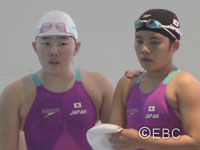
|Length : 47 |Year : 2018 |
Young swimmers, Honoka Okabe and Honoka Nakamichi are born in 2000 and raised in Ehime, Japan. Coincidentally, their given name and their age are the same.
Okabe has congenital disorder of her right arm from the elbows up. Nakamichi has no right leg as a birth defect. They began swimming in their childhood, but went to different swimming school. They met in their sixth year of elementary school, which was a wonderful encounter for them.
It is important for them to practice properly for the type of disability. They also have trained with disabled swimmers in nationwide.
Their next goal is to the take part in the competitive swimming 2020 Tokyo Paralympics. They are keep training towards the goal, encouraging each other.
“DEJIMA” Where the World Met Japan
DC281871![]()
長崎DEJIMA~現在・過去・未来~ [KTN]
![]()
![]()
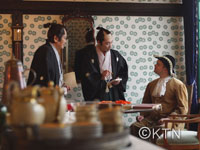
|Length : 47 |Year : 2018 |
Take a trip to Nagasaki’s Dejima, an island that connected Japan to the world.
During the two centuries after its creation in 1636, this island was the only place where interactions between Japan and the West took place, earning its place in Japanese history as a “foreign country within Japan.” Dejima was inhabited for limited periods by people from The Netherlands, including the Trading Post Chief (the “Kapitan”), scholars, and their supporting crew. Japanese officials and their interpreter “Tsuji” would also come and go. The island was connected to land by the short “Omotemonbashi” bridge, which become the funnel from which all things western would enter Japan. In this program, we celebrate the revival of the Omotemonbashi bridge after 130 years by taking a look at the history, people, things, and culture of Dejima with artifacts and reenactments, paying particular heed to one Tsuji named Tadao Shizuki and the Japanese words he coined for “present, past, and future.”
“SHIKAKE”~Ideas That Trigger Behavioral Change~
DC291834![]()
つい、人は… [CBC]
![]()
![]()
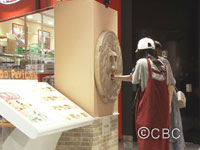
|Length : 48 |Year : 2018 |
You're in the men's bathroom. You see a target in the urinal. What do you do? You aim at it, right?
You see a basketball hoop and net. What do you want to do? You want to toss something through it, right?
If you see a viewing tube, what urge do you feel? You feel compelled to look through it, right?
Welcome to the fascinating world of "shikakeology," the brainchild of a Japanese professor who singlehandedly created an academic discipline that applies psychology to manipulate human behavior without people even realizing that they were influenced. Many of the issues we face in society today are the products of our own behavior. The problem, however, is that if someone tells us to correct our behavior, we tend to be reluctant, and if someone orders us to do it, we might even resist complying at all. But if people can be "triggered" into wanting to do something, changing their behavior is not that difficult at all.
In this program, we will explore the research of a professor who believes “SHIKAKE” is the means to trigger people toward positive changes in behavior.
It really takes much less than you might think.














